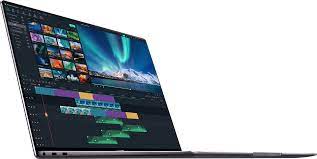What is bitcoin mining and how does it grow?
The bitcoin mining process is the method through which
bitcoins are released into circulation. It is also how the new transactions are
verified by the network , and is an essential element of the maintenance and
growth for the ledger blockchain. "Mining" is performed using
advanced hardware that can solve an extremely difficult mathematical problem
that requires computation. The first computer to discover the answer to the
problem gets the next bitcoin block and the process continues.
Mining cryptocurrency is arduous expensive and costly and is
only occasionally rewarding. However, it has an appealing appeal to many
investors who are interested in cryptocurrency due to it being a fact that
miner get compensated for their efforts using cryptocurrency tokens. It could
be that entrepreneurs consider mining to be coins from heaven, just like
California gold prospectors of 1849. If you're technically adept, why not take
a shot at it?
But, before investing time and money take a look at this explanation
to determine if mining is suitable for you. We'll concentrate on Bitcoin
(throughout the article, we'll use "Bitcoin" when referring to the
cryptocurrency or network as an idea or concept, and "bitcoin" when
we're referring to the number of tokens).
How Bitcoin
mining functions
To successfully complete a block Bitcoin miners must solve
extremely complicated math issues which require costly computers and huge
quantities of electricity. The hardware needed for computers is called
applications-specific integrated circuits or ASICs and could be as high as
$10,000. ASICs consume massive amounts of energy and have been criticized by
environmental groups and hinders the profits of miners.
If a miner manages succeed in adding a block on the
blockchain, they'll be awarded 6.25 bitcoins in reward. The amount paid out is
reduced by approximately every four years which is about every 210,000 block.
At the time of writing, August 20, 2021, bitcoin was traded for about $48,000.
This is 6.25 bitcoins, which is worth $300,000.
However, the value of bitcoin is fluctuating, making it
impossible or difficult for miners to estimate the value of their bitcoin payment
worth when they receive it.
Cilck On Our Website For More Details: Harvest Protocol
What you
need to know about mining Bitcoins
Though in the beginning of the history of Bitcoin,
individuals might have been capable of competing for blocks on a normal
personal computer at home, this is not the case. The reason is the fact that
the difficulty of mining Bitcoin alters with time.
In order to ensure seamless operation of the Bitcoin
blockchain and its capacity to verify and process transactions in a timely
manner, the Bitcoin network strives to produce one block at every 10 minutes,
or more. But, if there's 1 million mining rigs trying to solve the problem of hash
it is likely that they will find the solution quicker than the situation where
only the mining industry has 10 rigs working on the same issue. That's why
Bitcoin has been designed to assess and modify the difficulty of mining each
216 blocks, which is roughly every two weeks.1
If there's more computing power working together to mine
bitcoins, the mining difficulty grows to ensure the production of bitcoins at a
constant level. A lower computing capacity means that the difficulty level
drops. In today's world of network size an individual computer that mines for
bitcoin is almost certain to discover no results.
All of this means that in order to be competitive in mining
miners are now required to invest in high-end computer equipment such as GPU
(graphics processing unit) or, in a more realistic way an integrated circuit
for applications (ASIC). They can cost anywhere between $500 and thousands.
Certain miners, particularly Ethereum miners--purchase specific graphics card
(GPUs) as a cost-effective method of combining mining activities.
Mining as a
way of verifying Transactions
To allow bitcoin miners to earn bitcoins by checking
transactions, two things must occur. They must first verify 1 megabyte (MB)
worth of transactions. This can theoretically be as little as one transaction ,
but are typically hundreds of thousands, depending on the amount of information
each transaction holds.
In order to add an entire block of transactions onto
Blockchain, the miners need to solve a complicated mathematical computation
problem, which is also known as"proof of work. "proof of work."
What they're doing is coming up with a 64-digit decimal number, also known
as"a "hash," that is smaller than or equivalent to the hash of
the desired. The computer used by miners produces hashes at various
speeds--megahashes every second (MH/s) and gigahashes every second (GH/s) or
Terahashes per Second (TH/s)--depending on the machine and the user's ability
to guess all possible 64-digit numbers until it comes at a conclusion. It's an opportunity
to bet.
The difficulty in the block that was most recently released
in August 2020 is higher than the 16 trillion. This means that the probability
of a computer generating an error that is below the threshold is one out of 16
trillion. In other words, if you compare that to that's about 44,000 times more
likely hit the Powerball jackpot by using one lottery ticket than to choose the
right hash in a single attempt. Luckily, computers that mine give you a wide
range of possible hash choices. However, mining bitcoin takes a lot of energy
as well as sophisticated computational processes.
This level of difficulty is updated every block in 2016
approximately every two days, to meet the aim of keeping mining rates
constant.4 This means that the greater the number of miners trying to solve the
problem and the more complex the issue will become. Likewise, the more
expensive it is to make the next block of bitcoins.5 It is the reverse valid:
if computing power is removed from this network, then the level of difficulty
will adjust downwards, making mining easier.
Important
Takeaways
·
Blockchain is an online, decentralized ledger
that tracks approved transactions (blocks) that are linked to each other
(chains) within networks.
·
Bitcoin miners add blocks onto the bitcoin
blockchain through solving complicated mathematical equations The winner is
awarded an amount of bitcoins.
·
The difficulty of mining bitcoin is extremely
high, which requires expensive equipment, huge quantities of electricity, as
well as particular software.
·
If bitcoin mining is profitable is dependent on
the cost of electricity, but it's the more profitable when mining operate
together in a pool to share resources.
The risks
of Bitcoin mining:
·
Profitability:
Although Bitcoin miners do succeed but it's not certain that
their efforts will be profitable because of the large initial cost of equipment
and the ongoing costs of electricity. The electricity required by one ASIC will
consume approximately the same quantity of power as half million PlayStation 3
devices, according to a report in 2019 from the Congressional Research Service.
One way to reduce some of the costs of mining is to join an mining pool. The
pools allow miners to share resources and also increase the capabilities
however shared resources also mean that there are rewards shared, and the
chance of earning a payout is smaller when working with the pool.
·
Price
volatility:
The value of Bitcoin has fluctuated greatly since it was
first introduced in 2009. In the course of just one calendar year Bitcoin is
traded at a price of less than $10,000 and as high as $65,000. This type of
fluctuation makes it hard for miners to determine the value of their work
versus the cost of mining.
The tax
rate on Bitcoin mining
It's crucial to be aware of the effect that taxes could
affect Bitcoin mining. The IRS has been trying to take action against those who
own and trade in cryptocurrencies since the prices of these assets have
increased in recent years. Here are the main tax considerations to bear in mind
when it comes to Bitcoin mining.
Are you a
business?
In the event that Bitcoin mining is your main business you
might be able to deduct costs you have to pay to satisfy tax obligations.
Revenue is the amount of bitcoins you earn. However, if mining is just an
activity you enjoy then you won't be able to claim costs.
The mining of
bitcoin can earn you income:
If you're able to successfully mine bitcoin or other
cryptocurrency and have the fair market value of these currency at the time of
receiving them will be taxed as per normal income rates.
Capital
gains:
If you sell bitcoins for more than when you bought them, it
is considered capital gain. This will be taxed in the exact as traditional
investments like bonds or stocks.
Mining and
the Bitcoin Circulation
Apart from filling miner's pockets as well as helping to
support mining and the Bitcoin community, it also has an additional purpose
that is vital: it is the only method to let new cryptocurrency into
circulation. That is to say, miners generally "minting" currency. For
instance, as of the end of September in 2021 there was 18.82 million bitcoins
available from a total sum of 21, million.2
Apart from the coins created by the first block (the first
block that was designed by its founder Satoshi Nakamoto), every one of these
bitcoins were created due to miners. Without miners, Bitcoin as a network will
still exist and remain functional, but there would not be any more bitcoins.
Since the quantity of Bitcoin "mined" is reduced over time, the last
bitcoin will not be circulating until about 2140. It doesn't mean transactions
will stop being authenticated. The miners continue to check transactions, and
they will be compensated by fees to maintain intact the Bitcoin network.3
Apart from the quick-term Bitcoin payment, becoming an
active coin miner gives the user "voting" power when changes are
being considered in your Bitcoin blockchain protocol. This is known as BIP
(Bitcoin Improvement Protocol). Miners can exert some influence over the
decision-making process regarding issues such as forking.
How much a
miner earns
The rewards of Bitcoin mining are cut to half approximately
each four years.1 When Bitcoin was initially mined back in 2009 mining a single
block of bitcoin would be worth 50 BTC. In 2012, that was reduced by 25 BTC. In
2016, the reward was reduced in 2016 to 12.5 BTC. In May of 2020 the reward was
halved by 6.25 BTC.
In September of 2021 the Bitcoin price was around $45,000
per bitcoin, meaning you'd earned $281,250 (6.25 17900) for the completion of
an block.Not an excellent incentive to work out that complicated hashing
problem however it may appear.
If you're looking to know exactly when these halvings are
scheduled to be happening, you can refer to the Bitcoin Clock, which updates
the information in real-time. Incredibly, the market value of Bitcoin has been,
over the course of its history, generally correlated with the decline in the
number of new coins that are introduced into circulation. This lower inflation
rate led to an increase in the scarcity of Bitcoin, and in the past, the price
has increased along in tandem.
Bottom line
Although Bitcoin mining may sound appealing, the truth is
that it's a challenge and costly to do profitable. The high fluctuation of
Bitcoin's prices adds additional uncertainty to the equation. Be aware that
Bitcoin is a speculation-based asset that has no intrinsic value, meaning it
doesn't create anything for its owner, and it cannot be compared to gold. The
return you earn is contingent on selling it to a third party at a greater price
and that price might not be enough to earn an income.





Comments
Post a Comment